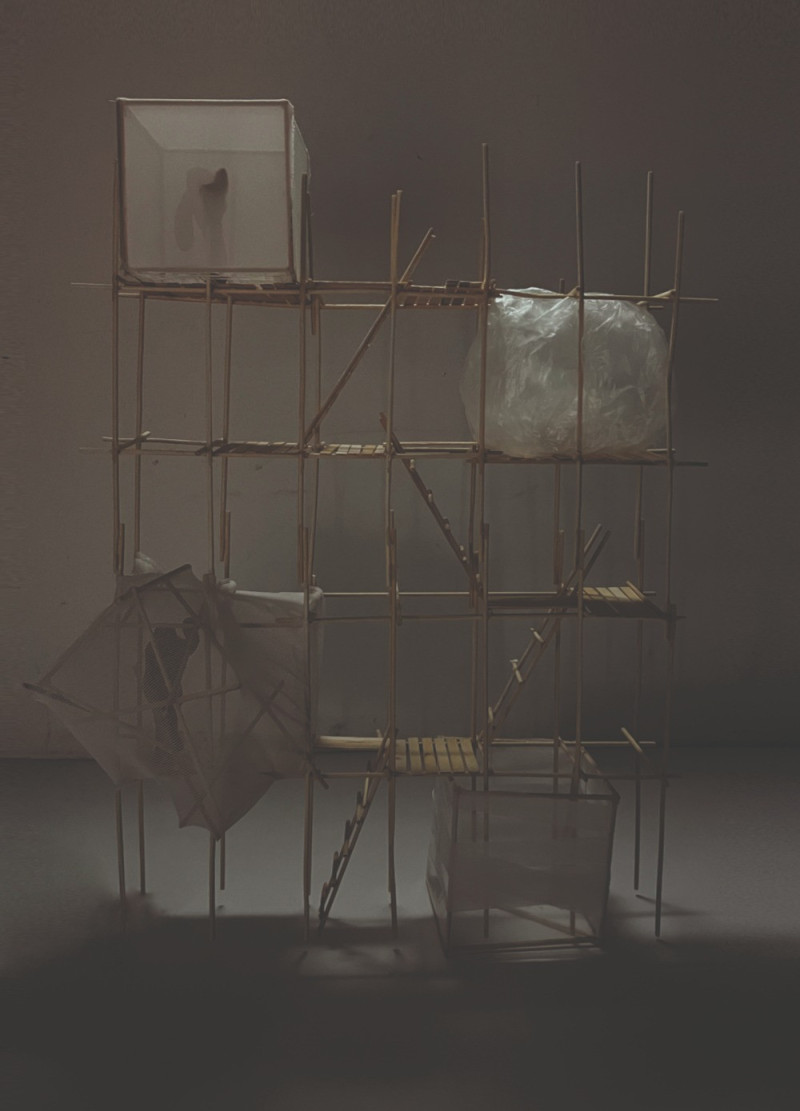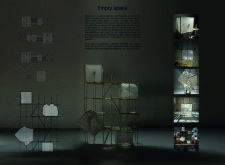5 key facts about this project
The project is set in the bustling and densely populated city of Tokyo, designed as a space for meditation and reflection. The goal is to create an environment that contrasts with the city's lively atmosphere, centered on the idea of empty space as a pathway to inner peace. The design engages users by combining architectural forms with ambient qualities, allowing a connection to thoughts and feelings while situated in a busy urban context.
Conceptual Framework
The concept of "empty space" serves as the underlying principle of the design. It is viewed as a gray zone situated between clearly defined forms. This framework guides the creation of spaces that promote contemplation. Scaffolds play an important role in the project. These structures are functional during the day and become voids at night, highlighting the shifting nature of urban environments. This transition mirrors the journey into meditation, navigating from the external bustle to a quieter mental space.
Light and Experience
Light is a critical element in the meditation cabins, shaping the user experience significantly. Upon entering, individuals find that the cabin is filled with light, which enhances the feeling of presence and leads them inward. This use of light does more than serve a practical function; it creates an atmosphere suited for meditation, guiding users to explore deeper internal landscapes. The emphasis on luminosity enriches the overall experience, making it a key component of the design.
Architectural Diversity
Each cabin showcases a different architectural perspective, introducing a range of design philosophies to the project. This variety creates multiple unique experiences, encouraging visitors to engage with the distinctive atmosphere of each cabin. The absence of specific discussions about materials allows the focus to shift away from physical aspects and toward the qualities of the space itself. This reinforces the intention of creating a thoughtful environment for meditation.
Temporary scaffolds are carefully positioned alongside more permanent structures in the city. This relationship captures the essence of urban life—dynamic, changing, and deeply human. The experience of moving through these spaces, paired with the effects of light, speaks to a commitment to fostering reflection and clarity amid the growing complexity of city living.



















































